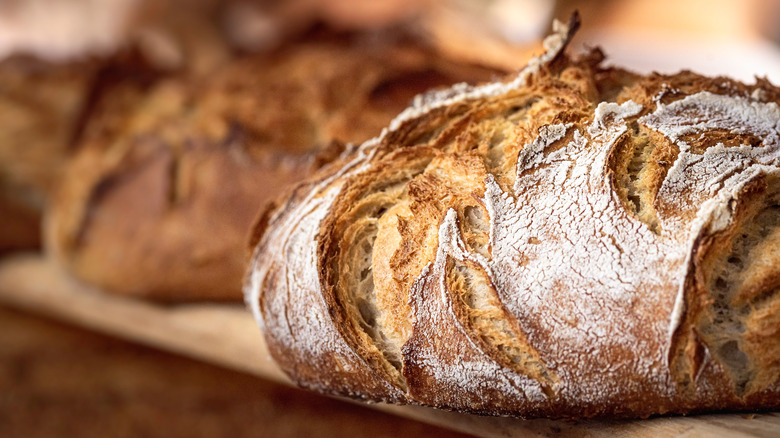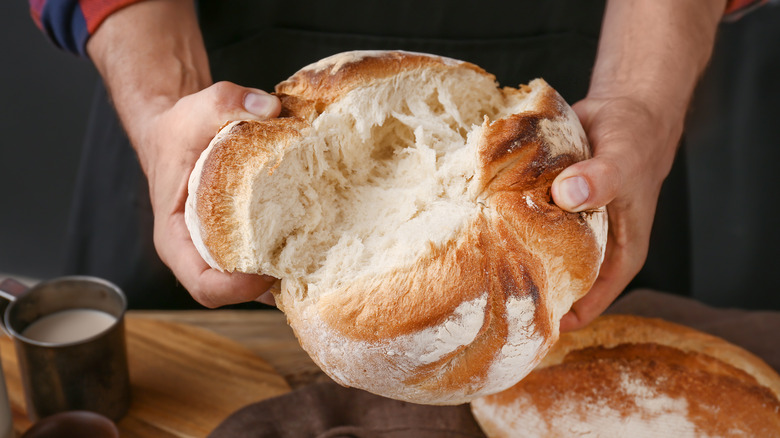J. Kenji López-Alt Thinks This Bread Recipe Changed Baking Forever
Before, during, and (almost undoubtedly) after the pandemic, new bread bakers have turned and will continue to turn to one recipe — The New York Times' no-knead bread by Jim Lahey and Mark Bittman. According to an article written by J. Kenji López-Alt, the recipe "changed the face of baking" in 2006. López-Alt explained why the technique works and how 15 years later, no-knead bread is still one of the Times' most popular recipes ever.
The recipe captured the attention of novice and professional bread lovers, the chef wrote, because it promised a crackly-on-the-outside, airy on the inside loaf where time, rather than your hands, did the work. Just mix flour, salt, water, and yeast in a bowl. Cover it and let it rest overnight. "Shape it into a loose loaf, let it proof, then bake it inside a preheated Dutch oven with the lid on. That's it," said López-Alt. While "no-knead" marketed the recipe to success, the Dutch oven technique — which produces steam that creates a crisp, professional-looking crust — was the real "revolutionary" element of no-knead bread, López-Alt said. Here's how the chef and food writer approaches Lahey's and Bittman's recipe in 2021.
How Kenji López-Alt tweaks the viral no-knead bread recipe
There's nothing new about the no-knead bread, ancient Romans likely used the extended resting technique when making dough, while ancient Egyptians had "lidded vessels" for baking, Lahey told López-Alt for The New York Times. Lopez-Alt explains how the technique works: Flour contains proteins that, when combined with water, create gluten, which is the structure of trapped air bubbles that makes bread satisfyingly chewy. Kneading helps gluten form, but so does time, as Lahey and other bakers discovered. In the viral recipe, an 18-hour rest is the substitute for kneading.
López-Alt has made no-knead bread many times over the last 15 years and has tweaked a few things about the recipe. He adds a couple of drops of vinegar or lemon juice because the acid helps the dough keep its shape, rather than flatten. He also "tugs and folds" the dough every half hour during the first quarter of its rest to make it more compact. Finally, he proofs the dough ball in a mixing bowl and inverts it onto a baking tray — that way he doesn't ruin its shape while moving it into a Dutch oven. If you've never made no-knead bread at home, you can read the original recipe and López-Alt's article to get a head start. Perfection might take some trial and error, but at worst, you'll end up with some wonkily shaped but utterly delicious freshly baked bread.

